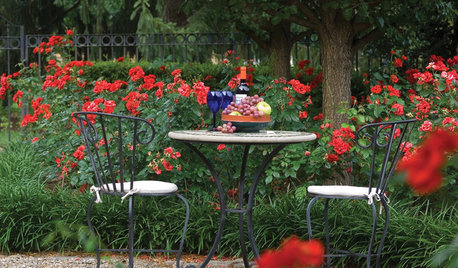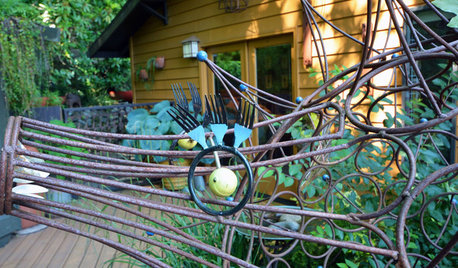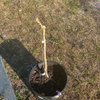Gardening: A Dangerous Passion
wellspring
15 years ago
Related Stories

GARDENING GUIDES5 Red Roses to Stir Garden Passions
Show your devotion to color, scent and more with these regal landscape beauties
Full Story
MY HOUZZMy Houzz: Men of Steel With a Passion for Repurposing
These Portland homeowners use metal, found objects and DIY know-how to create a home with an artist’s aesthetic
Full Story
HOUZZ TOURSMy Houzz: Dream Home a Labor of Love and Passion
An interior designer who’s also a boutique owner renovates a lavish home for her family in Florida
Full Story
BEDROOMSRoom of the Day: Bedroom Composed Around a Teen’s Passion for Music
A designer riffs off her young client’s love of the Beatles, classic rock and the Union Jack
Full Story
COLORLet Purple Passion Infuse Your Home
We take the mystery out of using this most spiritual of colors to create a deeply beautiful interior design
Full Story
LANDSCAPE DESIGNLandscaping Magic Fixes a Dangerous Sloped Yard
It had scary parking, a confusing entry and erosion issues. See how this steep California landscape gained safety, beauty and clarity
Full Story
GARDENING GUIDESGreat Design Plant: Texas Ranger Explodes With Color
If purple is your passion, embrace Leucophyllum frutescens for its profusion of blooms and consider the unfussiness a bonus
Full Story
GREAT LAKES GARDENINGGreat Lakes Gardener's December Checklist
Learn the dangers — and benefits! — of snow in the garden, and how to decorate for the best look and the least damage
Full Story
PETSGarden Alert: 22 Plants to Keep Away From Pets
Avoid potential danger by keeping dogs and cats away from these landscaping and houseplant favorites
Full Story
GARDENING GUIDESNortheast Gardener's June Checklist
Tote out garden ornaments, unleash your color passion and glean inspiration from the many Northeast tours
Full StorySponsored
Central Ohio's Trusted Home Remodeler Specializing in Kitchens & Baths







inkognito
Embothrium
Related Discussions
Gardening can be dangerous!
Q
Gardening Is Dangerous!
Q
Mouse in garden, any danger or problems?
Q
Dangers of Gardening
Q
catkim
timbu
gardengal48 (PNW Z8/9)
woodyoak zone 5 southern Ont., Canada
Embothrium
karinl
nandina
Saypoint zone 6 CT
wellspringOriginal Author
woodyoak zone 5 southern Ont., Canada
accordian